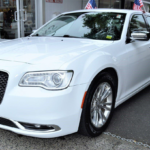If you think you are already well informed on all there is to know about vehicles, you may be in for a surprise. Automobiles have advanced and changed so much that even avid followers of the automotive world have misconceptions. There are new drivers and long-time drivers who can’t tell the difference between what’s a car myth and car fact. Everything from terminology like AWD and 4WD are often misconstrued to mean the same thing. Even basic car maintenance services like when the oil should be change is misunderstood. Get the real low-down on car facts now.
Here are 8 common car misconceptions addressed:
- You need to change the oil every 3,000 miles. Not every vehicle follows the same rule when it comes to oil changes, especially with newer vehicles. Refer to your owner’s manual, it’s where you’ll find the right answer for your vehicle. The owner’s manual will also inform you of the type of oil you should be using. The fact is newer vehicles are carrying improved engines. There’s also vehicles using synthetic oils, so in some cases an oil change isn’t warranted until you reach 15,000 miles. In general though, most vehicles these days run about 7,500 miles before needing an oil change. Many newer model vehicles will also have an oil life indicator to tell you when an oil change is necessary. For instance, the 2016 Cadillac CTS suggests you to change the oil when it hits 25% of remaining life.
- Change your air filter when you change your oil. The condition of a vehicle’s air filter will depend on where it’s driven. Normal city driving conditions vary greatly from dirt road driving in the country. In general, it is recommended for the air filter to be changed once a year or about every 12,000 miles. You can also assess the need for an air filter change by looking at it. If you can’t see through it when you hold it up against the light, it’s time to change it, according to Jim Lewis, an Approved Auto Repair administrator for AAA Northeast.
- My car needs regular-grade fuel, so premium fuel must make my car run better. If your car requires regular-grade fuel, going for premium doesn’t improve its performance. Cars with high performance engines often require premium fuel because of their refined engine. If you were to put regular fuel in a vehicle that requires premium fuel it may cause an engine knock. So when you see the octane rating with fuel, it’s not a measure of energy content, but more to address the engines needs.
- Let your car warm up before driving. If you’re driving a much older vehicle, letting the engine warm up before driving is not a bad idea. If your vehicle is modern with today’s times, it’s probably running on an engine that warms up quick and is ready to drive. A warmed up engine simply allows for better fuel economy and performance. So whether you have an old or new vehicle, the general rule is not to floor it the very moment you start it up, but sitting there letting the vehicle warm up is more likely unnecessary with newer vehicles.
- Any soap will do for a car wash. Car-wash liquid is formulated to clean your vehicle without stripping the wax finish. Other soaps like dish wash soap and laundry detergent is not the same and can actually strip the wax finish on your vehicle, so don’t just go with any soap for your next car wash.
- Four-wheel drive (4WD) and All-wheel drive (AWD) is the same thing. While the term 4WD and AWD are commonly used interchangeably, there are differences between the two. In general, 4WD is best for situations where you need to get through rough roads like climbing steep hills or rocky land where there is low-traction. Vehicles with 4WD also typically have more ground clearance. For most drivers, unless you’re an off-road enthusiast, you’ll find little need for such a system. AWD on the other hand works well with surfaces like mud, sand, snow, or any type of loose surface where the system can distribute power to either the front set of wheels or rear set of wheels so that less slipping occurs. AWD is what you may commonly see featured with today’s SUVs and minivans. Many drivers are also under the impression that a vehicle with 4WD or AWD will give better braking ability, but having good tires is what does the job.
- You’re going to pay more insurance with a red car. Red cars are generally associated with vehicles being sportier and faster, but when it comes insurance, you don’t have to pay more for owning a red car. Yes, sports cars may be more prone to vehicular incidents due to the style of driving often associated with it, but the color alone does not impact how much you’ll pay for insurance.
- Don’t let anyone service your vehicle except the dealer or you’ll void your warranty. Unfortunately some vehicle owners are informed that service must be performed at the dealership in order to keep the warranty in force, but the truth is you can have your vehicle serviced by yourself or anywhere else. You simply need to keep a good record of receipts, what parts where used, and what was done in case there are any questions. As long as the service is done according to the recommended schedule and using the right parts, it would not void your warranty. The only risk there is to voiding a warranty is when you don’t seek the necessary maintenance needed at the recommended times.
With so many changes going into how vehicles are designed and developed for the better, clearly some old rules no longer apply today and some are simply myths.
[Resources: AAA; Cars.com; Consumer Reports.]




